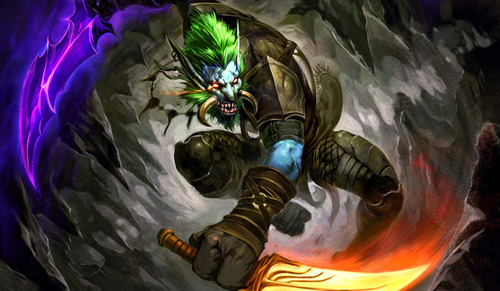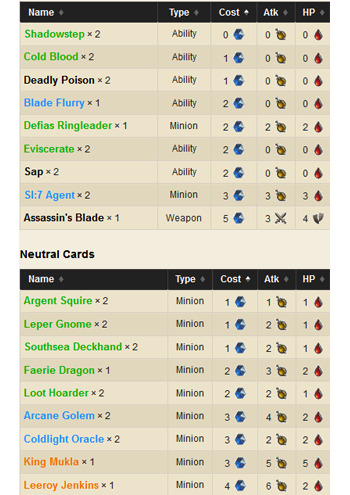Deck Tech: Backspace’s Aggro Rogue
FeaturesGaming July 15, 2014 Jason Dayrit 0

Aggro decks are always popular and most classes can have some variant of this archetype. This time, we’ll focus our attention on Rogue with Backspace’s deck!
It’s very understandable to play aggro decks. Aggro, short for aggressive, is a deck archetype that focuses on getting damage to an enemy’s face quickly and consistently. This forces the opponent on a sort of clock, oftentimes needing to scramble his or her defenses before the life total goes down to a dangerous level.
Aggro decks are typically cheap to build, and games go quick for them. It’s either you win within your first ten turns or you run out of steam and lose. This all-in style allows players to climb ranks quickly, and oftentimes the archetype preferred at the start of a new season, where everyone is scrambling to gain ranks as quick as possible.
Rogue is no stranger to aggressive deck styles, with the Tempo Rogue deck having enjoyed a bit of popularity a few seasons back. Like a typical aggro deck, the Rogue of old is filled with cheap minions. What other classes lack however, is the amount of tempo cards found in Rogue. Combining Rogue’s combo mechanic with cheap and efficient minions means that initiative is almost often on the Rogue’s side. Backspace is a consistent Legendary player in the NA server, and has enjoyed a fair amount of success with an aggro Rogue:

Rogues have the easiest time to access a huge amount of burst damage. They can do this efficiently and consistently, as evidenced with the very popular Miracle Rogue deck. That deck however, is a bit removed from Backspace’s version of Rogue.
While both kinds of decks have huge burst potential, the aggressive type of Rogue decks tend to be able to go against other aggro decks from different classes more consistently. And this deck is by far easier to learn and more forgiving of play mistakes. If you like figuring out combos but still not on a skill level to play Miracle, then this Rogue is a great way to understand the class’s subtle mechanics and playstyle.
At first glance, it seems like this type of Rogue is a straightforward aggro deck: cheap minions, combo cards, and big damage Legendaries to finish the opponent off. Southsea Deckhand combos rather well with your Hero Ability, while Argent Squires help in dealing out early damage that sticks on the board for longer. Leper Gnome and Loot Hoarder are in the deck to make sure you’re dealing damage and drawing cards even during your opponent’s turn, making their clock run out faster. Arcane Golems and Leeroy Jenkins round out the damage-dealing minions, and these cards can quickly finish the game for you, especially when done with a Shadowstep or two.
Taunts can be worked around thanks to a fair amount of direct damage, or by using Sap. Unlike Miracle Rogue, who only has one avenue for attack, this deck threaten’s the opponent’s life total on multiple fronts, and sometimes the game can quickly finish thanks to an Eviscerate seemingly out of nowhere.
The tech of the deck is from the fact that is can play a disruption game via card denial. By using Coldlight Oracle, King Mukla, Sap, and Shadowstep, this Rogue can clog an opponent’s hand with cards, denying him or her access to future draws. The fact that the opponent gets Bananas or potentially useful cards is not the point, since this deck abandons all other forms of control and just goes for the face anyway. When timed right, you can fill up his or her hand with Bananas, then burn away the most important minion with Sap.
One of the difficult parts of learning the deck is when to play Coldlight Oracle. The card is begging for an early play, but for the Rogue, timing is everything. Playing Oracle must be done when you know your opponent’s hand is near full, so you’re sure to burn the cards he or she draws.
As for budget replacements, Argent Commanders can be subbed for both Legendaries, but Mukla plays an integral part of the hand-clogging strategy. Faerie Dragon and Assassin’s Blade are flexible slots which can be subbed with Wolfrider, Backstab, Blood Knight (for Zoo matchups), and even Edwin Van Cleef.
Check out Backspace’s commentary on the deck and how to play against certain decks here.













No comments so far.
Be first to leave comment below.